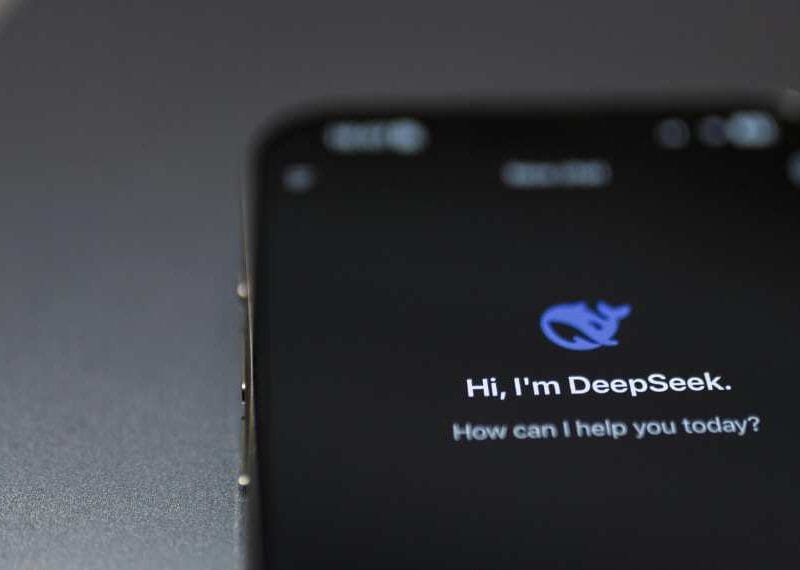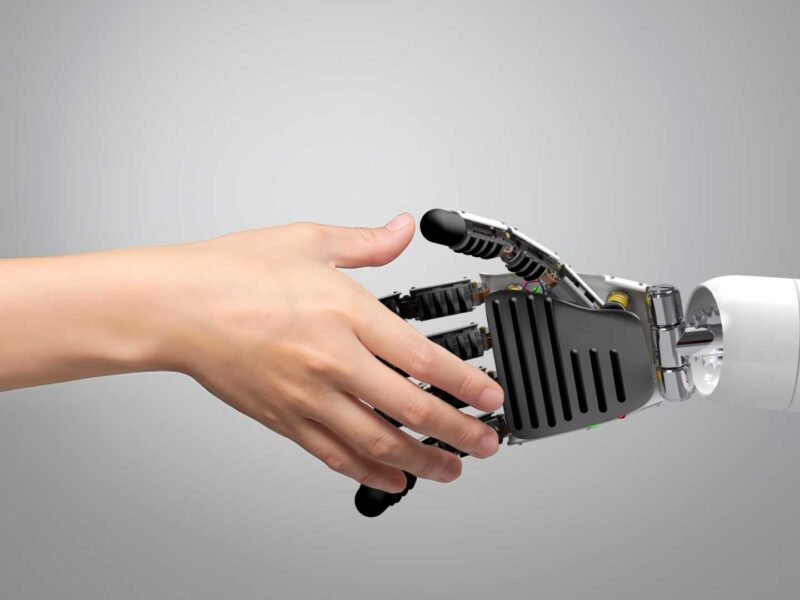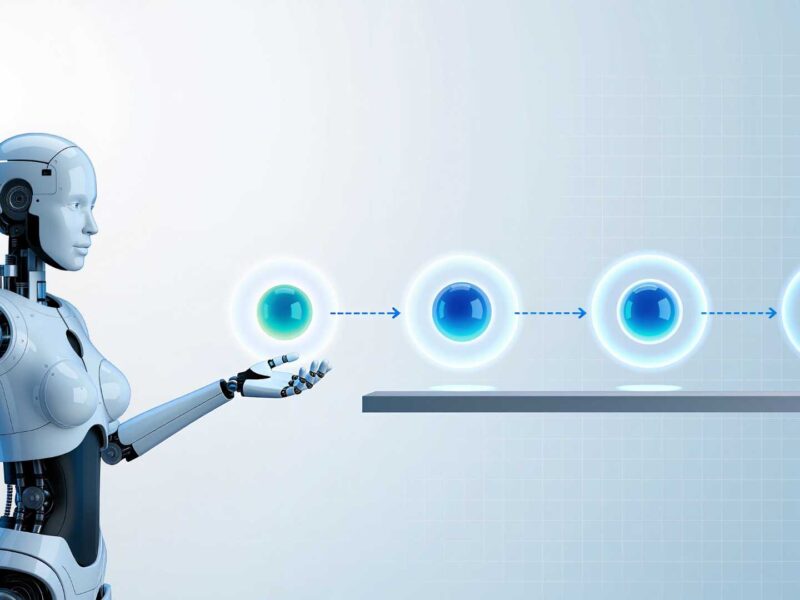AI’s Wow Factor: Cool Practical Work and Industry Innovations
AI innovations are consistently making headlines, showcasing dazzling potential that often feels like science fiction.
Yet, amidst the flash and the futurism, a crucial question for business leaders and tech professionals is emerging:
Which AI advancements are not only attention-grabbing but are also delivering tangible, practical value right now, fundamentally reshaping workplaces and industries?
This inquiry moves beyond theoretical discussions to pinpoint real-world applications that truly impress and drive meaningful change.
This Techronicler article compiles invaluable insights from leading business executives, strategic thought leaders, and seasoned tech professionals, revealing their top picks for AI innovations that blend groundbreaking capabilities with immediate, measurable impact, offering a glimpse into the AI solutions that are actively shaping a more efficient, intelligent, and human-centric future.
Read on!
Brian Fontanella
One AI innovation that genuinely impressed me recently is Microsoft’s integration of Copilot into the 365 suite.
On the surface, it looks like just another productivity tool—but when I saw it summarize a 30-email thread into a bulleted brief in seconds, I knew this wasn’t just flash. One of our accounting firm clients tested it during tax season, and it saved hours per week by distilling client emails, flagging missing docs, and even suggesting draft responses. For a firm juggling hundreds of files, that’s not just cool—it’s a game changer.
What struck me most is how it enhances the way teams already work. We didn’t need to retrain anyone or change core workflows. It’s just there, quietly streamlining the chaos. That kind of smart, embedded AI—not a shiny standalone app, but something that fits into the daily grind—is what’s going to move the needle for small and mid-size businesses.
Girish Manglani
One standout is AI-driven meeting tools that not only transcribe but summarize and assign action items automatically—like Supernormal or Fireflies. It’s flashy on the surface, but the impact is real: no more digging through notes or missing follow-ups. It turns every meeting into a searchable, shareable brief. That’s not just productivity—it’s peace of mind.

Girish Manglani
CEO & Co-Founder, Ezcards
Maria Edington
I’m constantly blown away by how flashy AI has become, but the best moments are the ones that sneak up on you with actual utility.
ChatGPT redesigned my bathroom after a flood. Whisk animated a toppling Franken-techstack GIF that became the hero of a landing page. And my favorite: I trained a “Dream Job Consultant” GPT to coach me through job applications. It helped tailor resumes, sure, but more than that, it pushed me to think. “What problem does this company actually want solved?” “Where does my experience give me an advantage?” It was like having a career coach in my pocket.
AI is getting glitzy, but when it’s personal and useful, magic is happening.

Maria Edington
VP of Marketing, WizeCamel
Nicolas More
The most impressive AI innovation I’ve witnessed isn’t the flashiest model – it’s the democratization happening right now.
As a Salesforce developer, I’ve watched enterprise teams use $50K personalization tools while SMBs manually research prospects for 30 minutes per email. That gap always frustrated me.
What’s truly revolutionary is how AI is now bringing enterprise-level capabilities to small businesses at accessible price points. We’re seeing tools that can analyze LinkedIn profiles, company data, and recent activities to create authentic email personalization in 30 seconds instead of 30 minutes – capabilities that were exclusive to Fortune 500 companies just two years ago.
The “flashy” part? AI processes vast amounts of data instantly. The “practical” part? A small business owner can now compete with enterprise sales teams without the enterprise budget.
This democratization is leveling the playing field in ways that matter for real businesses, not just tech demos.

Nicolas More
Founder, IntroWarm
Christopher Helm
One practical yet overlooked AI innovation I recently saw: an AI that disagrees. Not just chatbots parroting helpful answers, but a conversational AI trained to challenge internal decision-making, like a devil’s advocate for enterprise teams.
We deployed a prototype in a procurement workflow: instead of confirming assumptions, it actively presents counterarguments based on past project failures, regulatory risk, or competitor strategies. It doesn’t just answer, it provokes smarter thinking. The result? 12% fewer critical errors in contracts and a faster alignment between legal, tech, and sales teams.
In a world of agreeable AI, dissenting intelligence might be the next killer feature.

Christopher Helm
Managing Director, Konfuzio
Sonali Dharve
One of the latest AI breakthroughs that has actually impressed me with its mix of flash and functionality is the breakthrough in AI-based digital twins for supply chain optimization. Digital twins do exist, but the use of generative AI to generate dynamic, real-time copies of entire supply networks is revolutionary.
This isn’t merely about rigid models; it’s about AI modeling innumerable scenarios – from surprise disruptions to volatile demand – and instantly delivering the best solutions. The “flashy” part is the magnitude and velocity of its forecasting capacity, enabling businesses to “see” and avoid impending issues even before they materialize.
The “practicality” is not to be debated: it directly translates to substantial cost savings, minimized waste, and increased resilience for companies struggling with complicated global logistics. This breakthrough enables proactive decision-making, going beyond reactive problem-solving.
Sonali Dharve
Digital Marketing Manager, Knee Expert
Andranik Minasyan
These days, everyone is talking about AI, but I always look at how it really impacts our industry and our partners at inoRain. For some roles, such as developers or writers, AI can be perceived as a form of competition. But in OTT, AI mostly helps us scale our business and improve the user experience in ways that weren’t possible before.
One thing I find really valuable is how AI supports personalized suggestions based on each user’s preferences, such as viewing times, color themes, and device data. The system learns from how people interact with the platform and uses that big data to create smart user recommendations. This makes the content feel more relevant and keeps people engaged longer.
At inoRain, we focus on giving our clients the tools to deliver these personal experiences at scale. AI is like an extra team member that works behind the scenes, analyzing huge amounts of data and making the service feel tailor-made for each viewer.
So, in our field, AI isn’t replacing anyone — it’s adding more value and helping us and our partners grow faster and smarter.
Susi O'Neill
As a solopreneur, I was delighted to hear about Kairos, an agentic AI tool that takes the faff out of repetitive work like invoicing by recording your screen and learning how you do processes to do it for you next time.
This sort of AI innovation gets to the heart of solving a real-world problem: invoicing or sales lead logging is repetitive and tedious and often standardised. Tech developers who create more tools to solve real-life business automation issues will succeed in this space (and make business owners very happy).

Susi O’Neill
Founder Director, EVA Digital
Borets Stamenov
Gemini Robotics stood out as a flashy, practical AI breakthrough recently. Google DeepMind trained their Gemini 2.0 model to drive real-world robots—folding origami, organizing desks, even making a miniature basketball dunk—all with language-model-level reasoning.
This isn’t just lab fluff. It felt tangible. The robots adapted to unstructured environments and responded to verbal commands—a huge leap from scripted industrial bots. That capability hints at real-world applications in healthcare, logistics, retail, or hospitality, where adaptability and reasoning are essential.
What’s exciting is how this bridges the gap between AI thinking and physical execution. We’re watching AI agents move from code to real-world impact. For anyone curious about practical robotics, this is the peek into our near future.

Borets Stamenov
Co-Founder & CEO, SeekFast
On behalf of the Techronicler community of readers, we thank these leaders and experts for taking the time to share valuable insights that stem from years of experience and in-depth expertise in their respective niches.
If you wish to showcase your experience and expertise, participate in industry-leading discussions, and add visibility and impact to your personal brand and business, get in touch with the Techronicler team to feature in our fast-growing publication.













